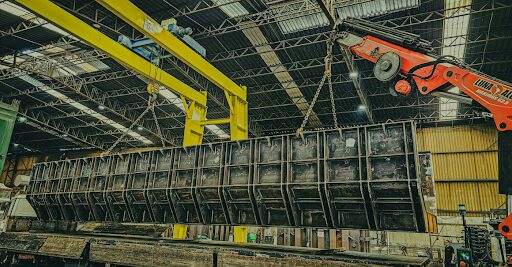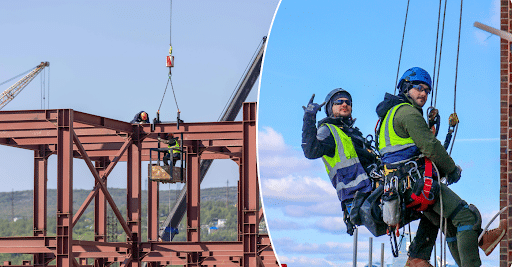In the world of commercial construction, time is money—and safety is paramount. As project timelines shorten and structures become more complex, the importance of rigging solutions has grown considerably. From the initial placement of steel beams to the installation of heavy HVAC units, rigging systems are the unsung heroes behind nearly every successful lift on a jobsite.
Modern rigging has advanced well beyond chains and hooks. Today, it includes a wide variety of specialized equipment and engineered techniques designed to handle complex loads with accuracy and efficiency. For construction professionals, understanding the role of rigging in jobsite logistics isn’t just helpful—it’s vital.
Table of Contents
The Critical Function of Rigging in Construction
Rigging serves as the foundation of any heavy lifting operation. It includes the rigging hardware and systems used to secure, move, and position materials, machinery, and building components. In commercial construction, rigging is responsible for lifting everything from precast concrete panels and steel trusses to large glass curtain walls and rooftop mechanical units.
Without a reliable rigging system, even the most advanced crane is limited in its capabilities. Rigging ensures the load is balanced, secure, and can be safely maneuvered in three-dimensional space. This not only protects the crew and equipment but also prevents costly damage to materials or structures.
Types of Rigging Equipment and Their Applications
The appropriate rigging setup can vary greatly depending on the task. Some of the most commonly used rigging tools in commercial construction include:
- Wire Rope Slings: Known for their strength and flexibility, these are frequently used for lifting heavy, rugged loads like steel beams and rebar cages.
- Synthetic Slings: Lightweight and versatile, synthetic web and round slings are perfect for lifting delicate or finished materials, such as prefabricated wall panels or glass.
- Chain Slings: Built for strength and durability, chain slings are commonly used in environments that demand high resistance to abrasion, heat, or cutting.
- Shackles and Hooks: These essential hardware components connect slings to lifting points and come in various sizes, materials, and safety ratings.
- Spreader Bars and Lifting Beams: Used to distribute weight evenly and maintain proper load balance during lifts, especially for long or awkwardly shaped items.
- Turnbuckles, Eye Bolts, and Swivels: Smaller hardware that helps adjust tension, align angles, and prevent rotation during a lift.
Each component contributes to building a system tailored to the load and lifting conditions. Choosing the right equipment and using it properly are essential for maintaining safety standards and preventing failures.
Engineering Precision into Every Lift
The margin for error in a lifting operation is slim, which is why modern rigging practices often involve collaboration among lift planners, structural engineers, and safety officers. Factors such as load weight, center of gravity, angle of lift, wind conditions, and sling tension must be considered beforehand.
3D lift planning software has also become a standard tool on larger job sites. These platforms enable teams to simulate complex lifts ahead of time, arranging sling setups, crane positions, and rigging angles to identify potential issues before work begins. This proactive method reduces risks and often accelerates project timelines.

The Safety Factor
Rigging-related accidents are some of the most dangerous and costly incidents in construction. Whether it’s a dropped load, a snapped sling, or an unstable lift, the consequences can be serious. That’s why strict adherence to safety protocols, equipment inspections, and load testing is essential.
Regularly inspecting slings, shackles, and rigging hooks is crucial. Wear, corrosion, and deformation can weaken equipment. OSHA and ASME standards offer guidance on inspection frequency and when to remove items from service.
Proper training also plays a crucial role. Crews must understand rigging angles, sling tension, load ratings, and how to read rigging charts. Even the best equipment is ineffective in the hands of an untrained operator.
How Rigging Impacts Project Timelines
Efficient rigging isn’t just about safety; it’s a strategic edge. The ability to move large materials accurately and quickly reduces downtime, keeps crews productive, and helps other trades stay on schedule. For example, installing multiple rooftop units in a single lift with a custom lifting beam can save hours, if not days, of crane time.
As commercial buildings grow in size and complexity, rigging specialists are becoming essential members of the construction team. Their input during the planning stage can help prevent last-minute changes, expensive delays, and even structural issues.
Final Thoughts
Rigging may occur behind the scenes, but its impact on commercial construction is front and center. From towering office buildings to sprawling healthcare campuses, rigging solutions enable the lifting, moving, and placing of components that bring projects to life.
In a landscape where precision, speed, and safety are essential, investing in smart rigging practices is more than just a box to check — it’s a fundamental part of every successful project. As construction demands continue to grow, so will the need for innovative, well-designed rigging strategies that can meet the challenge.





